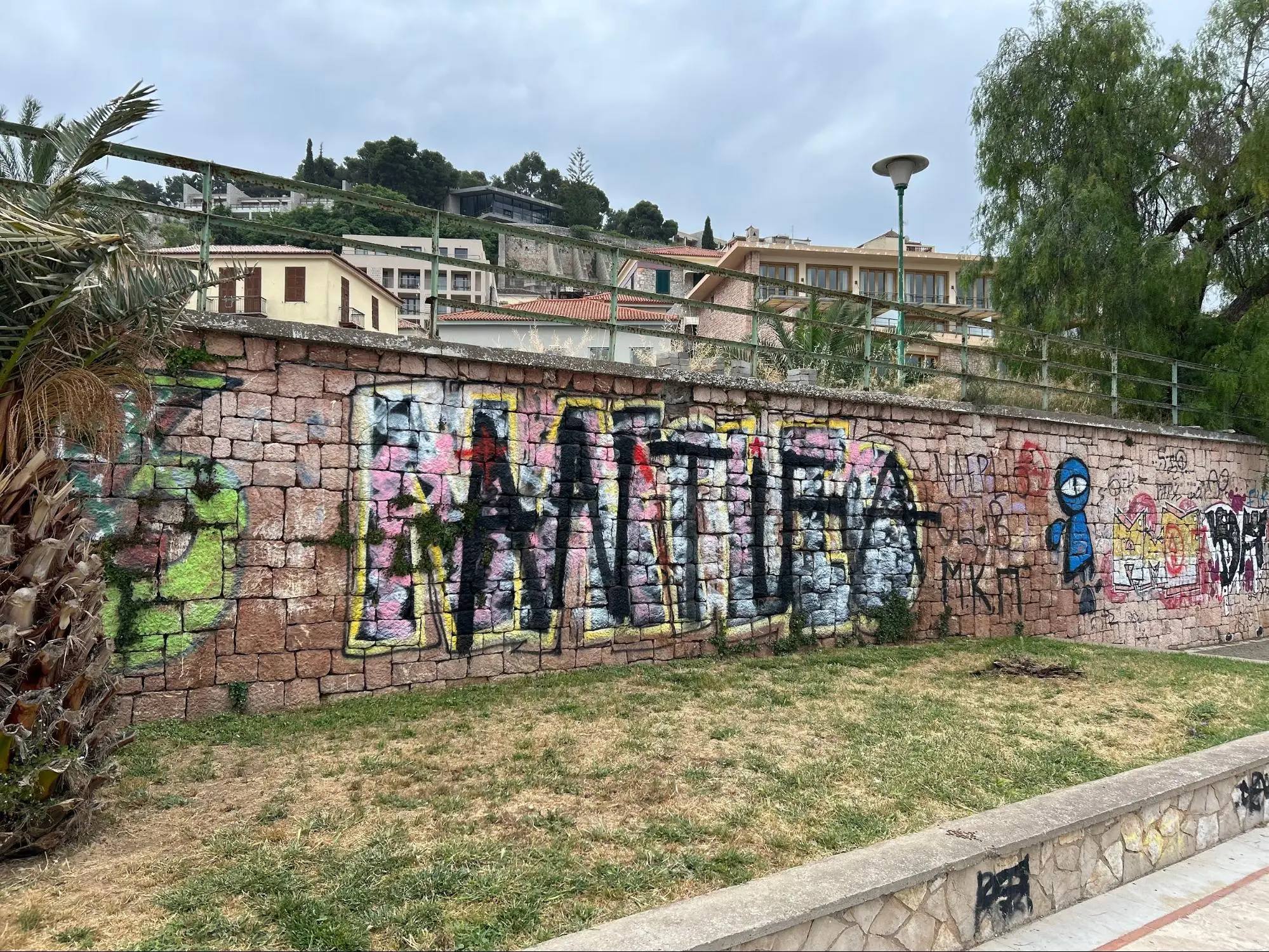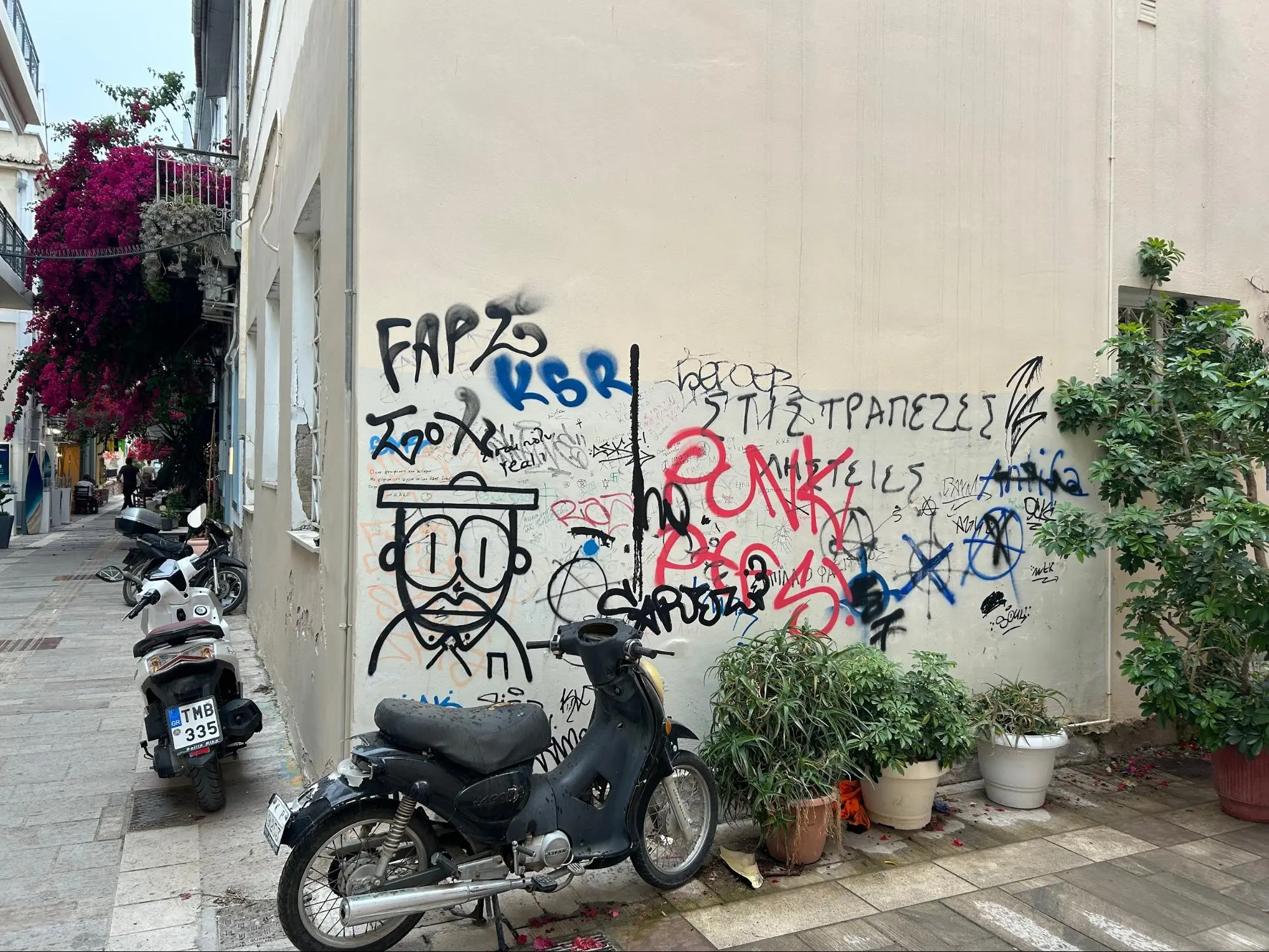
As a regular visitor and seasonal worker in Greece, I’m seeing more and more graffiti every time I go back. And at the risk of sounding too altruistic, it pains me greatly that some of our most treasured towns and locations are covered in the ugliest form of “art” ever conceived.
Most of it is produced by delinquents and undesirables, and I know I’m not the first journalist to suggest cracking down on its pervasiveness. Athens and Thessaloniki are always beginning and ending publicly-funded cleanups of graffiti in places of interest.
Although graffiti drawing is technically illegal in Greece, it is not enforced very much (somewhat like smoking), and there are prominent liberal contingents who welcome it as a form of art and free expression. But when I see graffiti plastered all over public spaces and highly valued attractions — both ancient and modern — I am disgusted and saddened by its negative impact on the beauty of our country.
 Nafplio, Greece in May 2025 with noticeably more graffiti than my last visit in 2023.
Nafplio, Greece in May 2025 with noticeably more graffiti than my last visit in 2023.
Historically, KKE supporters have produced the most prominent graffiti found in urban areas. It is still quite common to see their communist symbols plastered all over public walls and businesses across Greece.
And to those who protest and say, “but it’s a form of art, and it depends on the location!” First of all, not everything that is hand-made and evokes an emotional response can be classified as art. Moreover, if street murals are so precious to some Greeks, the government can officially commission specific expressions of the graffiti style in pre-approved locations.
Graffiti has a long history here – the word itself comes from the Greek word “grafo,” or “to write.” In ancient times, it was carved directly into buildings and surges during times of modern political turmoil, such as the 2009 financial crisis. Most often, though, it is the product of boredom, delinquency and a desire to flaunt convention at the expense of our national pride.